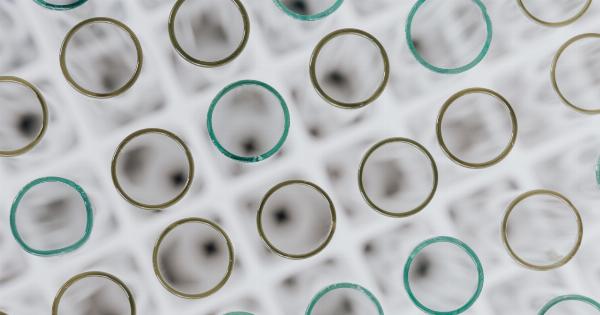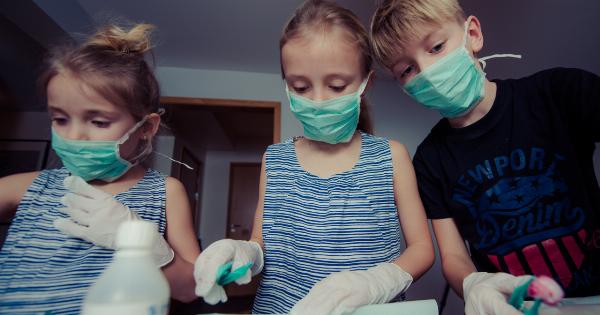Chemical burns are injuries caused by contact with chemicals that damage the skin or other body tissues. These burns can occur at home, at work, or even in a laboratory setting.
It is essential to provide immediate first aid for chemical burns to prevent further damage and promote healing. This article will discuss the proper steps to take when dealing with chemical burns and provide useful tips for a successful recovery.
Identifying Chemical Burns
Recognizing a chemical burn is the first step in administering appropriate first aid. Chemical burns can be identified by the following signs and symptoms:.
- Redness or discoloration of the skin
- Blisters or swelling
- Pain or numbness
- Blackened or dead skin
- Difficulty breathing (if the chemicals were inhaled)
If you suspect a chemical burn, it is crucial to act promptly to minimize damage and reduce the risk of complications.
Immediate Response
When faced with a chemical burn, it is essential to take immediate action to limit the burn’s severity:.
- Remove the individual from the source of the chemical and move to a well-ventilated area if possible.
- If the chemical is a powder, brush off any excess before flushing with water.
- Rinse the affected area with cool running water for at least 20 minutes. Do not use hot water as it can further damage the skin.
- Remove any clothing or jewelry that has come into contact with the chemical, but avoid pulling anything that may be sticking to the injury.
- Avoid applying any creams, lotions, or ointments to the burn as they may trap the chemical and worsen the injury.
Calling for Medical Assistance
After initiating immediate first aid, it is crucial to contact emergency medical services for professional assessment and treatment guidance.
Depending on the severity of the burn and the chemical involved, additional medical intervention may be required. While waiting for medical help to arrive, you can provide further comfort and reduce the risk of infection by:.
- Covering the burn loosely with a clean, non-stick bandage or cloth.
- Elevating the burnt area to reduce swelling if possible.
- Reassuring and calming the affected individual as anxiety may exacerbate pain.
Specific Chemical Burns
There are different types of chemicals that can cause burns, and their first aid procedures may vary. Here are some specific chemical burns and the recommended courses of action:.
Acid Burns
If the chemical is an acid:.
- Wash the affected area with copious amounts of water for at least 20 minutes.
- Remove any clothing or jewelry that may have come into contact with the acid.
- Do not use alkaline substances or neutralizers to neutralize the acid; water is sufficient.
Alkali Burns
If the chemical is an alkali:.
- Rinse the affected area with water for at least 20 minutes.
- Remove contaminated clothing or jewelry.
- To neutralize the alkali substance, you can rinse with a weak acid solution, such as vinegar, if it is readily available. However, water should still be used initially and in larger quantities.
Organic Solvents
If the chemical is an organic solvent (e.g., paint thinner, gasoline):.
- Flush the affected area with water for at least 20 minutes.
- Remove any contaminated clothing or jewelry.
- Follow the specific first aid instructions provided for the particular chemical or seek medical guidance.
Preventing Chemical Burns
Prevention is always better than cure. To reduce the risk of chemical burns:.
- Read and follow all safety instructions and guidelines when handling chemicals.
- Wear appropriate protective clothing, gloves, and eyewear when working with chemicals.
- Ensure proper ventilation in workplaces where chemicals are used.
- Store chemicals in designated areas away from children and unauthorized individuals.
- Regularly inspect and maintain chemical containers to prevent leaks or spills.
Seeking Professional Medical Treatment
It is worth noting that not all chemical burns can be treated with first aid alone. Some burns require immediate medical attention. You should seek professional medical treatment in the following situations:.
- The burn involves the face, hands, feet, genitals, major joints, or large areas of the body.
- The burn is a result of a powerful or unknown chemical.
- The individual shows signs of respiratory distress or difficulty breathing.
- The burn exhibits signs of infection, such as pus, increased pain, or redness.
- The individual has pre-existing medical conditions that may increase the risk of complications.
Conclusion
Proper first aid for chemical burns is crucial to minimize damage, promote healing, and reduce the risk of complications. Identifying the type of chemical burn and following the appropriate steps can make a significant difference in the outcome.
Additionally, taking preventive measures to avoid chemical burns is vital for personal safety. By being informed and prepared, we can effectively handle chemical burns and protect ourselves and those around us.





























